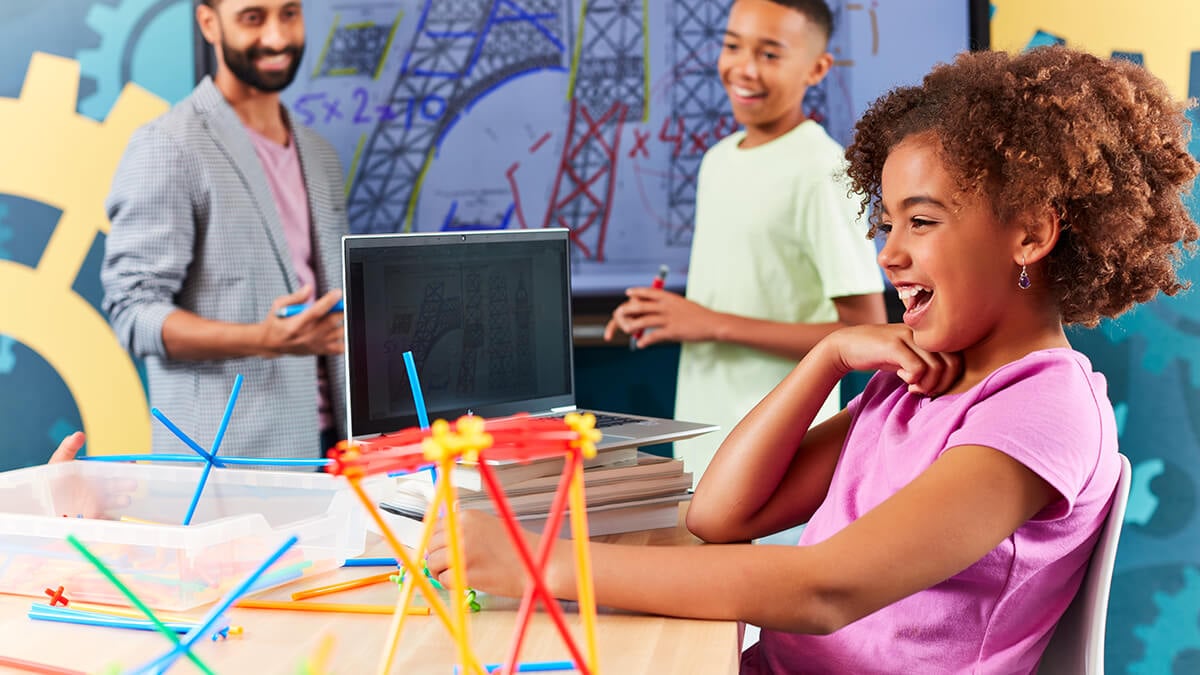Space to Create: How to Foster Creativity & Adventure for Young Learners

How can you facilitate a creative, memorable learning experience for young students? Engage a sense of adventure! Discover insights on how to foster this experience to enhance the early education process.
Think back to when you were in elementary school, whether that was a decade or a half-century ago. The memories that have stuck through all those years probably aren’t of specific math worksheets or reading assignments but of learning experiences you had.
They’re the times when you were allowed to be creative and adventurous. Those are the moments when children learn the most.
For me, it’s the six-foot-tall model of the Statue of Liberty I made out of papier-mâché for a group project in 5th grade. What’s the learning experience you remember?
In the insights that follow, we consider the benefits of letting young learners create their own experiences in the classroom – and how to build an environment that supports creative, adventurous pursuits to enhance the learning process.
Create Learning with Creative Lessons
Let’s start by taking a look at the research. A Gallup study on creativity in the classroom found that K-12 teachers who regularly assigned tasks that encouraged students to think creatively were much more likely to see enhanced cognitive skills among their students compared to teachers who didn't. These skills included drawing connections between different subjects, retaining more material, demonstrating deeper understanding of topics, and improved problem-solving and critical-thinking abilities.
Engaging with creative tasks in the classroom also corresponded with greater levels of confidence among students in their ability to master challenging material, an increased willingness to take risks and responsibility for their learning, and a greater desire to learn more about topics taught in the classroom.
When students feel confident about their ability to learn, their mood and morale improve, too.
Creative activities—like a group project illustrating the four seasons or the rock cycle—encourage interaction between students. These interactions can improve social emotional skills in addition to life skills – including how to share, work with a team, and solve problems.
The benefits of creativity in education are manifold. It’s important that we—as educators, parents, stakeholders—do our part to ensure classrooms allow students to exercise their creative muscles.
Make Space to Create
Rows of bulky desks aren’t conducive to classroom configurations that allow older students to practice their rhetorical skills in a circle – or younger ones to connect their arms to form the letters of the alphabet.
Classrooms should move with students in their creative states. Furniture on casters empowers students to arrange and rearrange the classroom as they see fit – or as required by the creative activity in which they’re engaging.
Educators and designers should also put themselves in the shoes of students. The youngest learners tend to engage in their most adventurous, most creative play on the floor or low to the ground. Classrooms should reflect that reality, with layouts reminiscent of playrooms at home.
Comfort and movement can also stoke creativity. Classrooms with nooks that include soft lounge furniture or chairs that allow students to move and fidget while seated may unleash learning that a more traditional layout cannot.
Find Joy in the Process
The early years in school are a time when a student’s creativity can come alive. They’re when kids begin to find beauty in the small things – and use the environment around them to enhance their learning.
But younger learners are not the only ones who benefit from free creative play. Students of every age learn better when they’re doing – when they’re engaging with and truly experiencing the material before them.
How can your school or classroom facilitate the wonder and joy that makes for a memorable learning experience? Let's brainstorm together. Connect with me on LinkedIn @ Emily McGinnis or get in touch directly at emily.mcginnis@ki.com.
Subscribe
Stay up to date with the latest trends and more.







